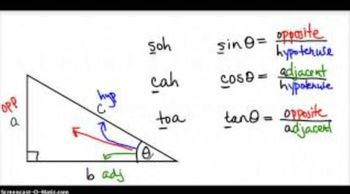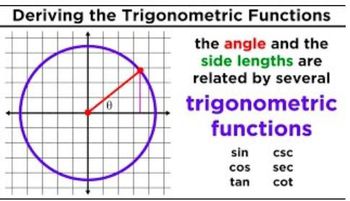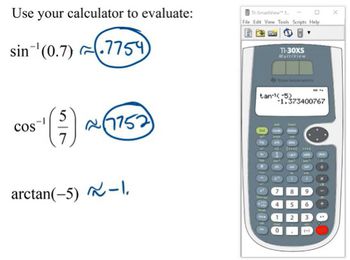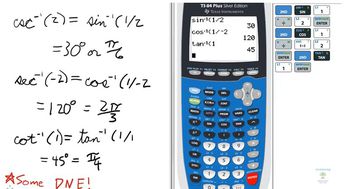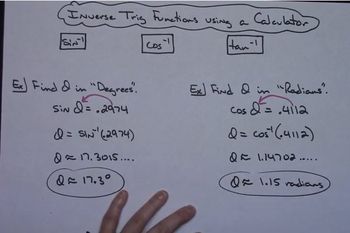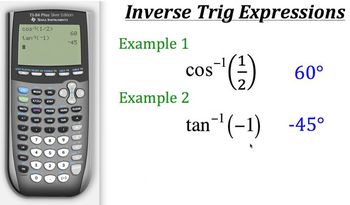Table of contents
- 0. Review of College Algebra4h 43m
- 1. Measuring Angles39m
- 2. Trigonometric Functions on Right Triangles2h 5m
- 3. Unit Circle1h 19m
- 4. Graphing Trigonometric Functions1h 19m
- 5. Inverse Trigonometric Functions and Basic Trigonometric Equations1h 41m
- 6. Trigonometric Identities and More Equations2h 34m
- 7. Non-Right Triangles1h 38m
- 8. Vectors2h 25m
- 9. Polar Equations2h 5m
- 10. Parametric Equations1h 6m
- 11. Graphing Complex Numbers1h 7m
2. Trigonometric Functions on Right Triangles
Trigonometric Functions on Right Triangles
Problem 29a
Textbook Question
In Exercises 23–34, find the exact value of each of the remaining trigonometric functions of θ. tan θ = -2/3, sin θ > 0
 Verified step by step guidance
Verified step by step guidance1
<Step 1: Understand the given information. We know that \( \tan \theta = -\frac{2}{3} \) and \( \sin \theta > 0 \). This indicates that \( \theta \) is in the second quadrant, where tangent is negative and sine is positive.>
<Step 2: Use the identity \( \tan \theta = \frac{\sin \theta}{\cos \theta} \) to express \( \sin \theta \) and \( \cos \theta \) in terms of each other. Since \( \tan \theta = -\frac{2}{3} \), we have \( \frac{\sin \theta}{\cos \theta} = -\frac{2}{3} \).>
<Step 3: Assume \( \sin \theta = 2k \) and \( \cos \theta = -3k \) for some positive \( k \), because \( \sin \theta > 0 \) and \( \cos \theta < 0 \) in the second quadrant.>
<Step 4: Use the Pythagorean identity \( \sin^2 \theta + \cos^2 \theta = 1 \) to find \( k \). Substitute \( \sin \theta = 2k \) and \( \cos \theta = -3k \) into the identity: \( (2k)^2 + (-3k)^2 = 1 \).>
<Step 5: Solve the equation \( 4k^2 + 9k^2 = 1 \) to find \( k \). Then, use \( k \) to find the exact values of \( \sin \theta = 2k \) and \( \cos \theta = -3k \).>
Recommended similar problem, with video answer:
 Verified Solution
Verified SolutionThis video solution was recommended by our tutors as helpful for the problem above
Video duration:
9mPlay a video:
Was this helpful?
Key Concepts
Here are the essential concepts you must grasp in order to answer the question correctly.
Trigonometric Functions
Trigonometric functions relate the angles of a triangle to the lengths of its sides. The primary functions include sine (sin), cosine (cos), and tangent (tan), which are defined as ratios of the sides of a right triangle. Understanding these functions is essential for solving problems involving angles and lengths in trigonometry.
Recommended video:

Introduction to Trigonometric Functions
Quadrants of the Unit Circle
The unit circle is a circle with a radius of one centered at the origin of a coordinate plane. The circle is divided into four quadrants, each with specific signs for sine, cosine, and tangent. Knowing which quadrant an angle lies in helps determine the signs of the trigonometric functions, which is crucial for solving the given problem where tan θ is negative and sin θ is positive.
Recommended video:

Introduction to the Unit Circle
Pythagorean Identity
The Pythagorean identity states that for any angle θ, the relationship sin²(θ) + cos²(θ) = 1 holds true. This identity allows us to find the values of sine and cosine if we know one of them, which is particularly useful when calculating the remaining trigonometric functions from the given tangent value.
Recommended video:

Pythagorean Identities

 6:4m
6:4mWatch next
Master Introduction to Trigonometric Functions with a bite sized video explanation from Nick Kaneko
Start learningRelated Videos
Related Practice






